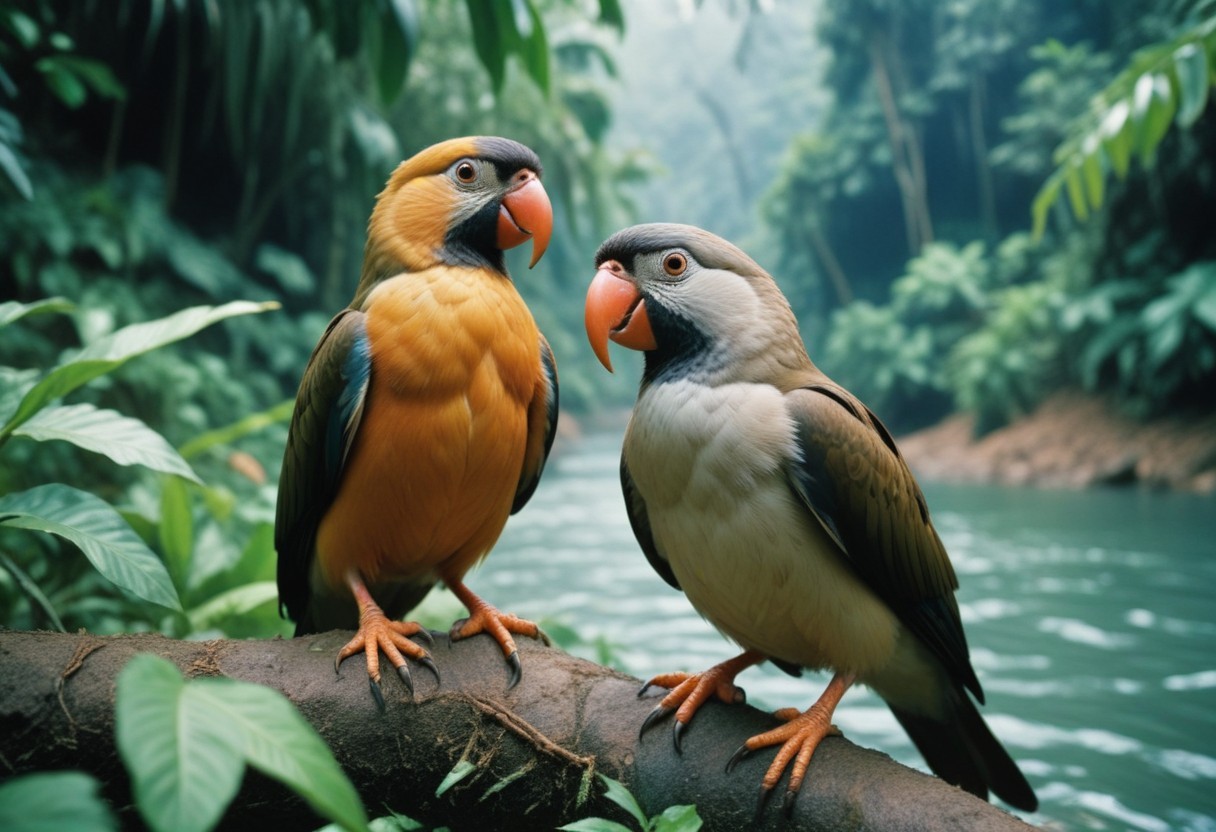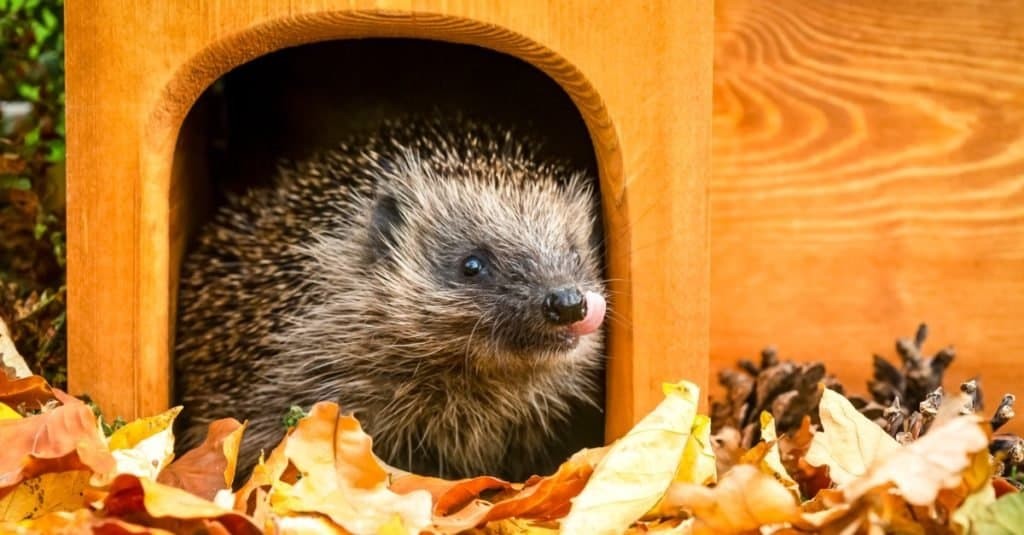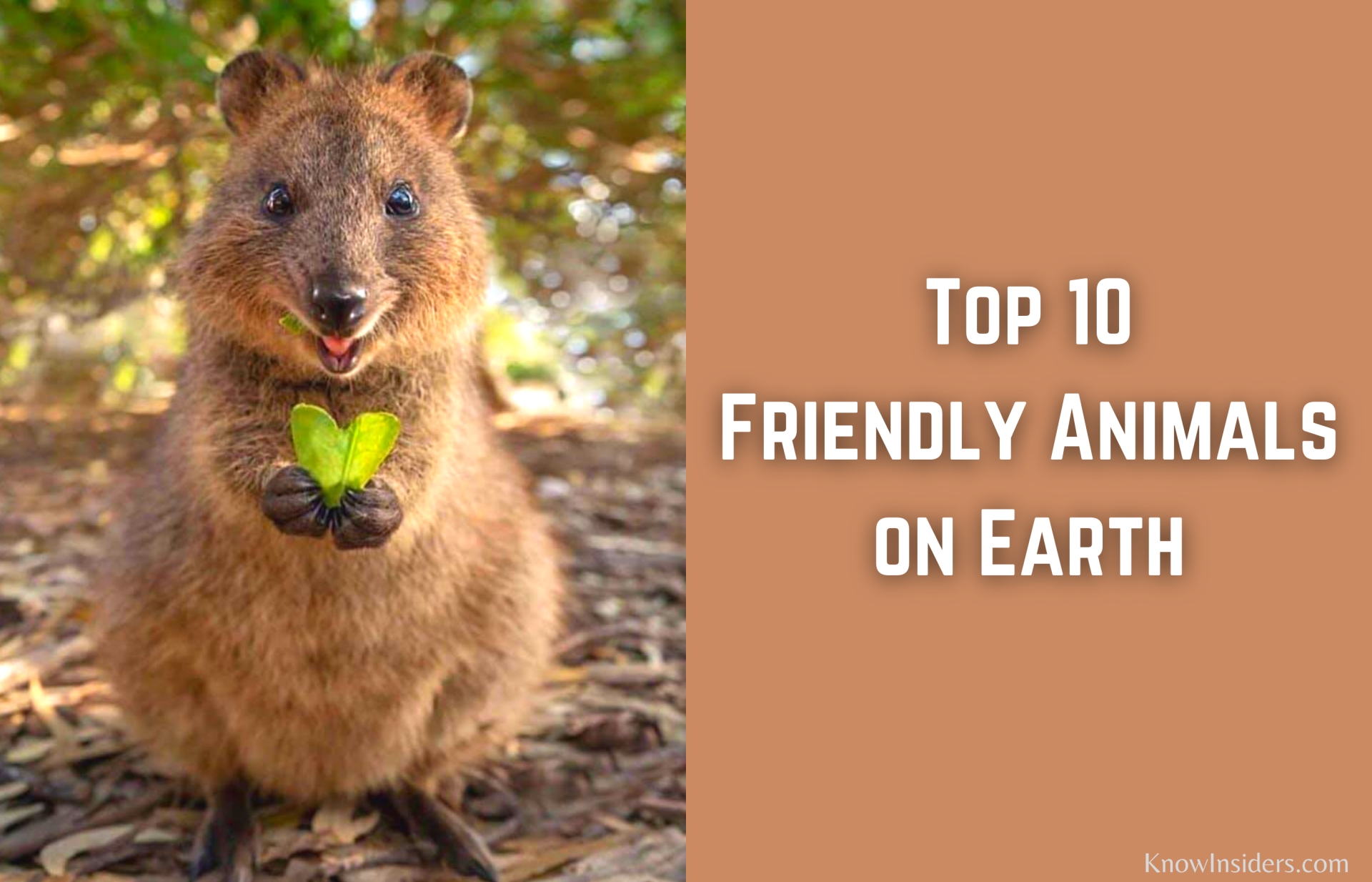Capybara -The Strangest Animal In The World
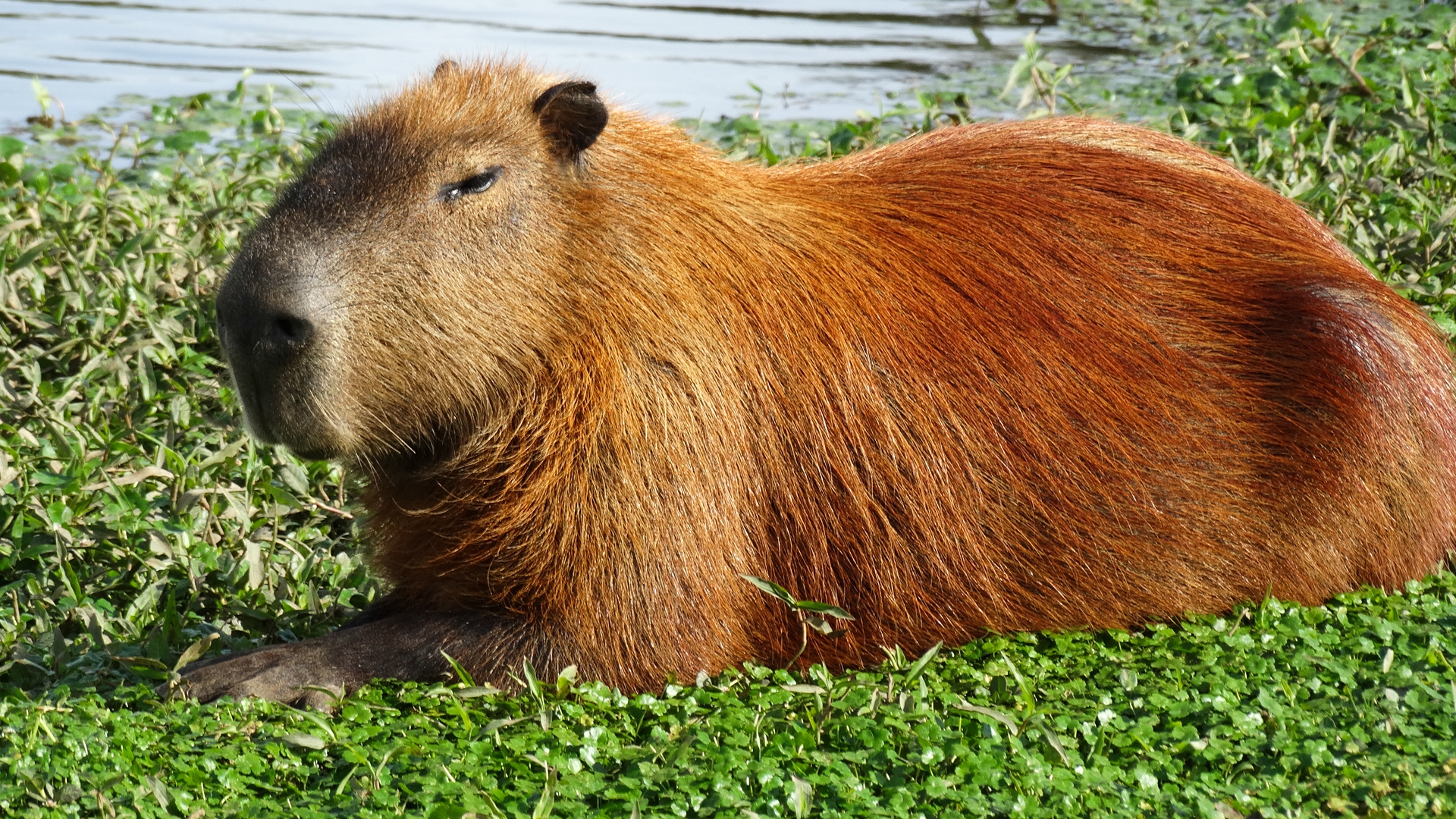 |
| Capybara -The Strangest Animal In The World - Photo: Reddit. |
The capybara is a semiaquatic mammal and the world’s largest rodent. Found along the water’s edge throughout South America and portions of Central America, capybaras are not endangered. Today, Knowinsider would like to provide you with some interesting facts about one of the world's strangest animals.
Capybara: Size
One of the first things you should know is about the size of this animal. According to the livesscience.com, capybaras are from about 39 to 51 inches (100 to 130 centimetres) long and about 20 inches (50 cm) tall from foot to shoulder. They tend to weigh 60 to 174 lbs. (27 to 79 kilograms), depending on gender. Females are usually a little larger than males.
Capybara: Habitat
These water-loving rodents need water to keep their dry skin moist and are found only in areas with abundant water sources. Some of their moist habitats include estuaries, marshes, river banks and along streams in Central and South America, according to the International Union for Conservation of Nature (IUCN). Capybaras, also called water hogs, sleep along with the water source in dense vegetation to hide from predators and to keep cool. Sometimes capybaras will nap in mud or shallow water, as well.
Capybara: Habits
Capybaras are social creatures. A typical group of capybaras contains around 10 members. During the wet season, though, a group can contain around 40 members and up to 100 members during the dry season, all lead by a dominant male. A group's home range may be from five to 494 acres (two to 200 hectares), according to the San Diego Zoo.
As crepuscular animals, capybaras are most active during dawn or dusk. Sometimes, though, when capybaras feel threatened they will be nocturnal, which means they will stay awake at night and sleep during the day. The dark provides them cover while they eat and socialize so that predators are less likely to attack them.
Capybara: Diet
Capybaras are herbivores and only eat vegetation. They eat mostly water plants and grasses, though grain, melons and squash can also be on the menu. Eighty per cent of their diet consists of only five different species of grasses, according to the San Diego Zoo. A typical day of eating can include 6 to 8 lbs. (2.7 to 3.6 kg) of fresh grass, according to the Rainforest Alliance.
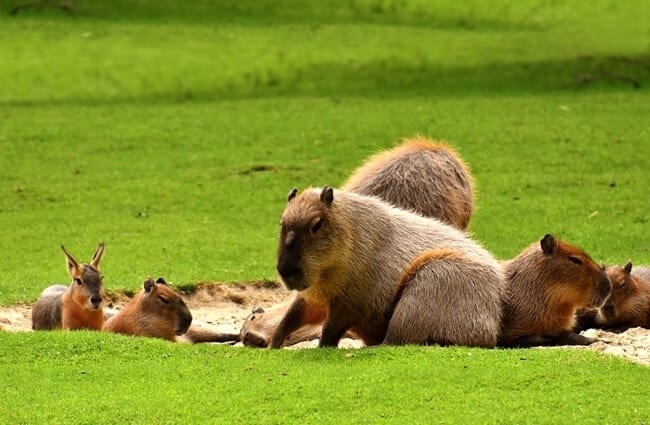 |
| Photo: TGTN. |
Interesting Facts about Capybaras
Capybaras Are the World’s Largest Rodents
Standing close to 2 feet tall at the shoulder and weighing up to 150 pounds, capybaras (Hydrochoerus hydrochaeris) are the largest rodents in the world. They have a barrel-shaped body and no tail and are significantly larger than their closest relatives, guinea pigs and cavies.
They Are Semiaquatic
Capybaras have partially webbed feet, making them great swimmers. Treehugger.com shows that their eyes, ears, and nostrils are located at the top of their heads, like hippos, enabling them to keep most of their bodies below the water while they watch out for predators. Capybaras are able to completely submerge themselves for up to five minutes, allowing them to hide from predators like jaguars, caimans, and anacondas.
Their Teeth Never Stop Growing
Capybaras have two long, front teeth, and like other rodents, these teeth never stop growing. Their incisors are strong and chisel-like, making them highly effective at cutting through grass. In order to keep their teeth to a reasonable length, capybaras must wear them down by grinding and chewing on food or bark. Their molars keep growing throughout their life as well, but they wear down from the constant grinding capybaras do to masticate their greens.
They Have Unique Vocalizations
Capybaras are highly communicative with members of their groups. They make unique sounds to share important information — warning of danger, signalling a move, and keeping track of their young. The sounds include teeth-chattering, squealing, whining, whistling, crying, barking, and clicking; each sound has a different meaning and is specific to their individual social group. Capybara young are particularly vocal, emitting sounds almost constantly.
| These social creatures have partially webbed feet and eyes, ears, and nostrils on the top of their heads, making them well-suited to their wetland habitat. From their plant and poop-based diet to their reputation as nature’s ottoman, read more to know about them. |
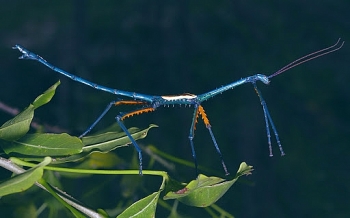 Stick Insect, one of the world's strangest animals Stick Insect, one of the world's strangest animals Stick insects are among the most popular insects kept as pets, mainly due to their unique stick-like appearance and the relative ease of care. Follow ... |
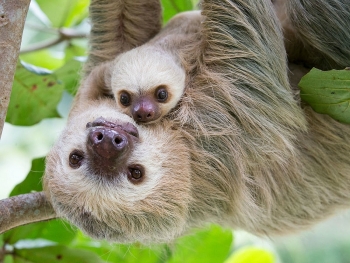 Sloth - One of World's Strangest Animals Sloth - One of World's Strangest Animals Sloths—the sluggish tree-dwellers of Central and South America—spend their lives in the tropical rain forests. Follow the article to know more about one of the ... |
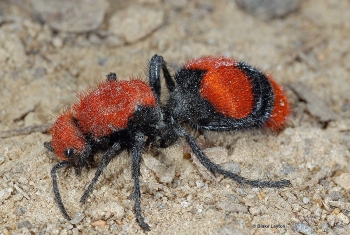 'Cow Killer' Velvet Ant - World's Strangest Animal 'Cow Killer' Velvet Ant - World's Strangest Animal Velvet ant is one of the strangest animals in the world and known for their extremely painful stings, hence the common name 'cow killer' or ... |

